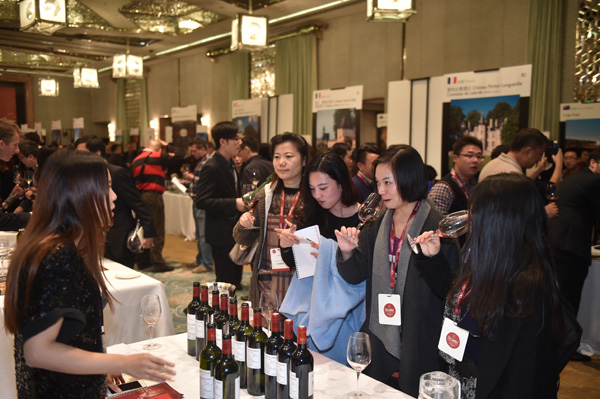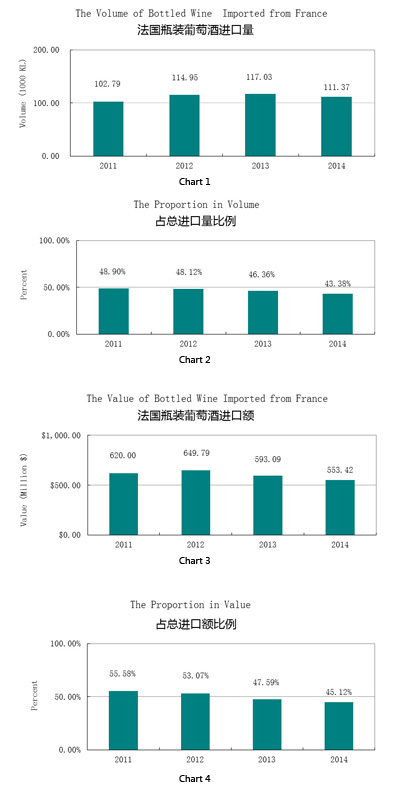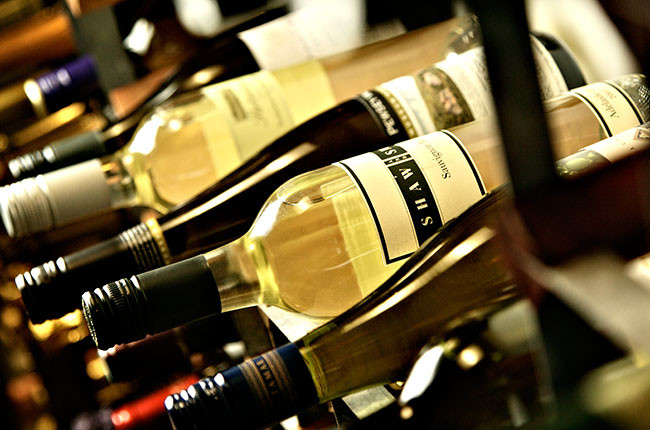Demei's View - Wine Communication from a Chinese Winemaker
For many years, market research carried out among Chinese consumers has revealed that the most highly recognised wine producing country is France, with the most famous region being Bordeaux. Whenever French wine is concerned, wine consumers always tend to pay special attention.
Indeed, France produces many delicious fine wines, and in large volumes. A considerable share of its production is exported, with a huge amount to China, demonstrating the enormous influence of French wines in the Chinese market.
Though Italy produces and exports almost the same amount of wine as France, its status in the Chinese market is far below France. There are a few reasons behind this.
If we cast aside the delicate cultural and political relationship between France and China, it seems the French influence on the wine industry in China has never been carefully studied, not even by the French wine trade.
In the 1930s, many Chinese students were sent to France to study oenology. After returning to China, they made enormous efforts to lay the foundation of China’s oenology education, and trained generations of winemaking professionals. Today, some of these admirable pioneers are still among us.

Decanter Shanghai Fine Wine Encounter © Decanter
For the younger generation, if they decide to study oenology abroad, many would choose France, though English, rather than French, has been the more commonly studied foreign language in Chinese middle schools and high schools.
In 1980, the French Remy Cointreau group and Tianjin Farm Group launched a joint venture winemaking company—Dynasty. The company was, surprisingly, one of the first Sino-foreign joint companies approved by the Chinese government after the economic reform.
The success of Dynasty led to the budbreak of China’s wine industry. The company itself has made enormous contributions in developing wine products and training talents.
In 2000, the respective Ministries of Agriculture of China and France worked together to build a pilot farm (now called ‘Domaine Franco Chinois’) in Huailai region, Hebei, to demonstrate viticulture and winemaking techniques.
The project came into being during the upsurge of winery development in China, and brought about a new era of Chinese wine industry development.
Today’s wine investors in China tend to blindly follow whatever the French do, and are pleased with themselves by just sharing the same latitude as Bordeaux. Some of them poured all their money down the drain due to the blindness, as reported by CCTV.
France is also far ahead of other wine producing countries in terms of promoting wine and its culture in China. From the end of 20th century, the French organisation SOPEXA (which has a government background) had been diligently organising various promotional activities in China. Thanks to SOPEXA, I had the opportunity to try imported wines for the first time.

Entering the new millennium, while the wine consumption market in China enjoyed high-speed development, the French wine trade stayed to further push wine consumption in China, and its regional bodies, one by one, came to China.
Many of the events they organised left a great impression among Chinese wine consumers. The most influential events include the Union des Grands Crus de Bordeaux (UGC) tasting and the ‘Everyday Bordeaux’ project.
Up to now, the CIVC and CIVB, together with the regional bodies of Rhone, Alsace, Loire and Southern France (Vini Sud), all regularly host large-scale tastings in China. At the same time, they invite Chinese wine media to visit the regions so as to demonstrate the charm of French wines from the production side. They also provide samples for wine courses designed for consumers.
And for Chinese wine students, no matter if you are learning about wine for professional reasons or as a hobby, it may be difficult for you to learn every wine producing country. However, no wine student would overlook French wines.
Having these factors in mind, you won’t be surprised that French wines occupy a bigger share of the Chinese market. In fact, the percentage taken up by French wine in the Chinese market is much higher than French wine’s share in the international market.
Indeed, the early bird gets the worm. However, as the consumer market expands and matures, other countries may strive for their own share of the market, thus squeezing French wines’ territory. This seems to be an inevitable tendency in the market.
In the last five years, under the shadow of the global economic crisis, other winemaking countries have started to push their wines harder in China. New world countries in the southern hemisphere, such as Australia and Chile, have been gaining grounds in the Chinese market.
For the wines made in the southern hemisphere, through harvest, winemaking and sales, they reach China just in time for the Spring Festival shopping season. For wine countries in the northern hemisphere, however, after vinification, their wines have to wait until next year to appear in the Chinese market (with Beaujolais Nouveau as an exception), causing a higher operational cost.
As a matter of fact, the average price of imported French wines is by no means significantly higher than the average price of other imported wines (Table 1). However, for the media, only the expensive grand crus seem to make a good story. As a result, consumers are given the impression that ‘French wines are always expensive’.

This may have been a good selling point two years ago, when luxurious business entertainment was still allowed by the government. Unfortunately now wine consumption has shifted towards the lower end, and wines that are seen to be expensive simply scare normal consumers away.
As the December 2014 Chinese wine imports figures are yet to be released, based on the figures of the first 11 months, it would seem French wines suffered a year-on-year decrease in volume for the first time, and a drop in value 2 years in a row. (Chart 1, 2, 3, 4)
Despite the above, the market share occupied by France in China is still massive, and it is still difficult for Australia, which is currently in second place, to overtake France. However, the news that Australian wines are going to enjoy a tariff exemption in China, right after New Zealand and Chile, has kept French producers on the edge of their seats.
On December 1st 2014, I went to join the ‘128 Great Years of Bordeaux Dinner’ hosted by Ch’ng Poh Tiong. There I met Alexander Van Beek, general manager of Chateau Giscours.
‘[The French] government doesn’t want to fight for the wine industry; they are only paying attention to the few industries with bigger trade values. How much can the Sino-French Airbus project make? Can it be more than the wine industry?’ he complained. ‘Shouldn’t the wine industry seem more important to the government?’
Translated by Sylvia Wu / 吴嘉溦
All rights reserved by Future plc. No part of this publication may be reproduced, distributed or transmitted in any form or by any means without the prior written permission of Decanter.
Only Official Media Partners (see About us) of DecanterChina.com may republish part of the content from the site without prior permission under strict Terms & Conditions. Contact china@decanter.com to learn about how to become an Official Media Partner of DecanterChina.com.



Comments
Submit